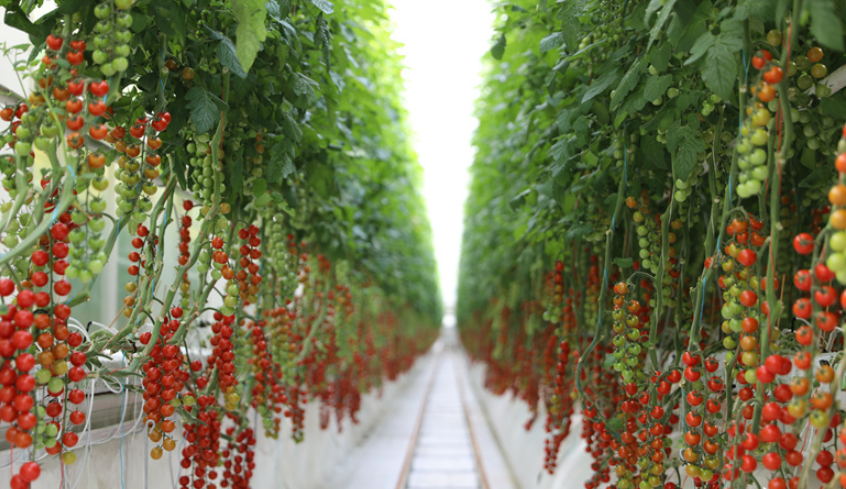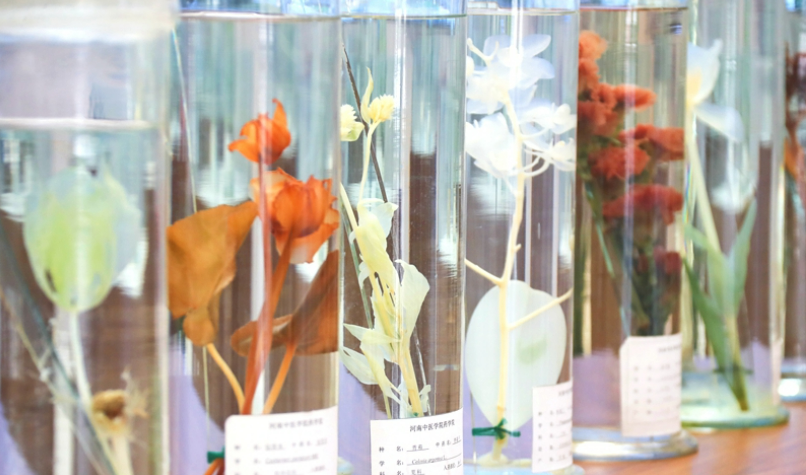Ancient creatures dating back 500 mln years inhabit secluded Nanping Island in Zhanjiang, S China's Guangdong
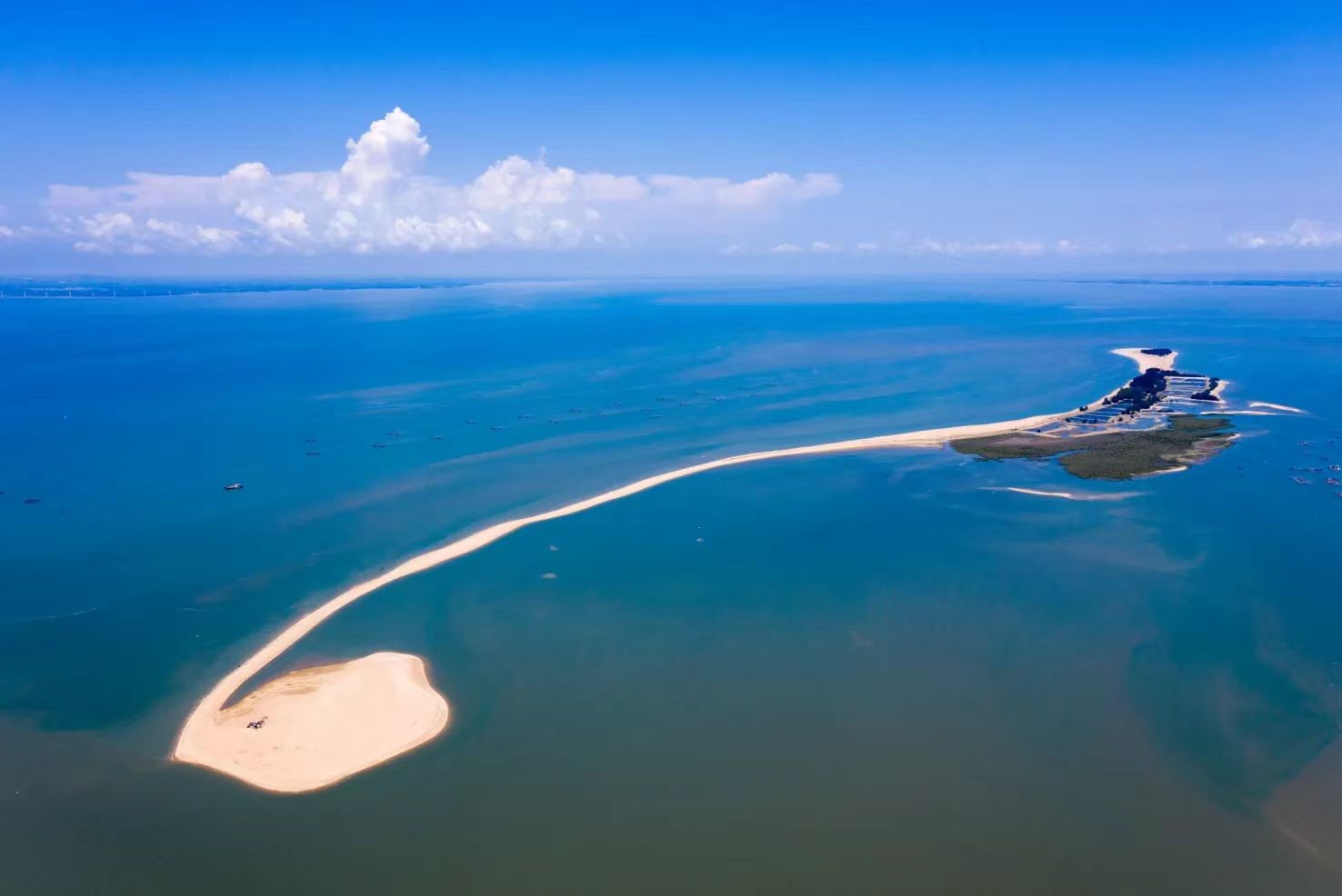
Photo shows an aerial view of Nanping Island, a small island in Zhanjiang city, south China's Guangdong Province. (Photo/WeChat account of the publicity department of the Communist Party of China Zhanjiang Municipal Committee)
Nanping Island, a small and unassuming island in Zhanjiang city, south China's Guangdong Province, is home to two precious species of ancient creatures that have lived on Earth for 500 million years - lancelets and horseshoe crabs.
Lancelets, a transitional form between invertebrates and vertebrates, have been dubbed vertebrate evolutionary "living fossils," while horseshoe crabs are believed to be Earth's sole remaining blue-blooded "living fossils."
These two species of "living fossils" have outlived even dinosaurs, and retained their prehistoric appearances. They are now both under second-class national protection in China.

A lancelet hides in the sand, with half of its body exposed. (Photo/CCTV)
Lancelets, also known as amphioxi, appeared in the oceans 500 million years ago, and are the earliest chordates – the predecessors to all vertebrates.
The creatures have a tiny translucent fish-like body measuring 3 to 5 centimeters long and a primitive notochord. They have remained virtually unchanged over the last 500 million years, providing key insights into vertebrate evolution.
Since China has listed the animals as a national second-class protected species, they are promptly released whenever accidentally caught by fisherpeople, according to local fisherpeople in Zhanjiang.

Photo shows horseshoe crabs on a beach. (Photo courtesy of the interviewees)
Horseshoe crabs, the other ancient animal species that enjoys the island's pristine ecology, are the only creatures with blue blood that still roam Earth after nearly 500 million years.
Horseshoe crabs' unique blue blood contains bioactive compounds that can combat bacteria, viruses, and even cancerous cells, making it a vital ingredient in medical testing.
Chinese horseshoe crabs mature extremely slowly, taking over a decade to reach adulthood. Their larvae have exacting environmental requirements for environmental factors such as temperature and salinity.
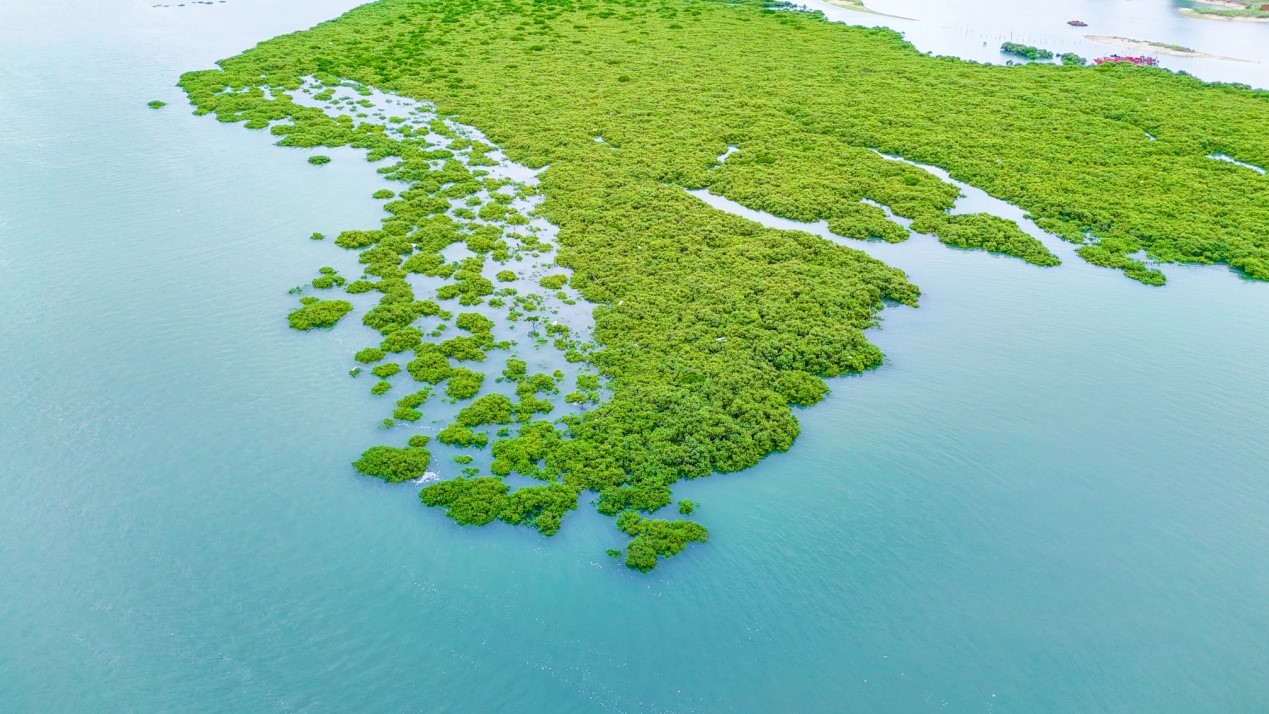
Photo shows an aerial view of part of Nanping Island, a small island in Zhanjiang city, south China's Guangdong Province. (Photo/WeChat account of the publicity department of the Communist Party of China Zhanjiang Municipal Committee)
Covering an area of 0.73 square kilometers, the elongated Nanping Island lies between Zhanjiang's Donghai Island and Naozhou Island. It stretches about 7 kilometers, with its broadest point less than a kilometer wide, giving it the nickname "jade belt beach."
Despite its sound ecological environment and stunning natural scenery, the island is seldom visited, due to limited connections with the outside world, according to a scientific research team from Sun Yat-sen University in Guangdong.
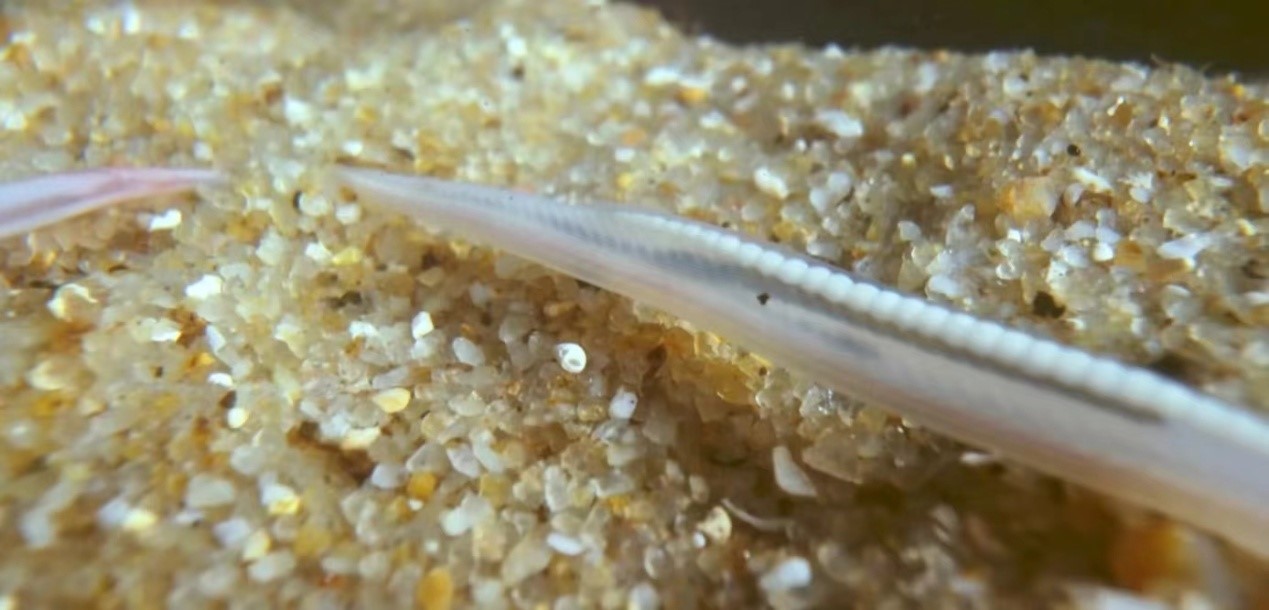
Photo shows a primitive notochord in a lancelet, which represents a transitional form between invertebrates and vertebrates. (Photo/CCTV)
Photos
Related Stories
Copyright © 2024 People's Daily Online. All Rights Reserved.






